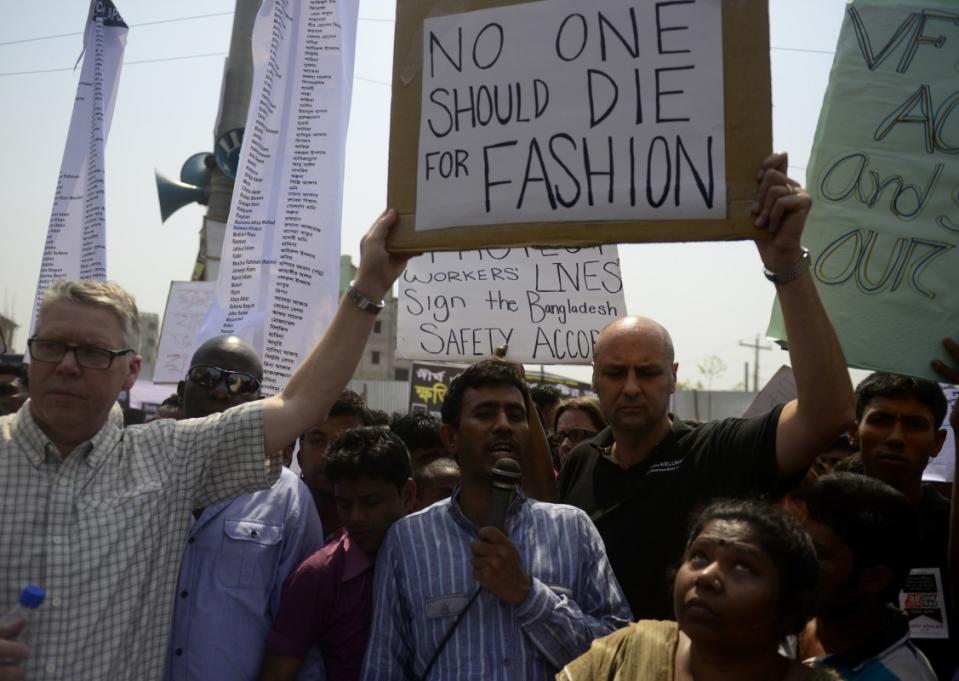What Exactly Does It Mean When a Factory Is Audited?
When a fast-fashion brand is questioned about its labor practices, the communications team often points to audits as the reason customers shouldn't be concerned. Shein, for example, used audits as a testament to why its "innovation center" (now infamously visited by a group of influencers) was a safe environment for employees. But does an audited factory equal a factory that's up to safe working standards? Not always: Rana Plaza, the garment factory in Bangladesh that collapsed and killed 1,134 people in 2014, had undergone audits earlier that year. How can this happen when we’re led to believe audits are a beacon of safety and compliance?
According to many experts, there are quite a few reasons why they simply aren't. For starters, audits mean different things in different factories — and auditors have different roles and expectations.
"The goal [of an audit] is to get as authentic a snapshot as possible about what’s happening in the supply chain at any given time," Rebecca Ballard, founder and executive director of Fashion Connection, explains. "That's impossible to do in your own workplace."

Photo: MUNIR UZ ZAMAN/AFP via Getty Images
It's difficult to see the problems close to you, Ballard says, so an auditor (or auditing group) is there to see what the team might not be able to see: "It's not going to be something that's an overview of everything that's happening throughout the entire supply chain. It will not cover every aspect of social and environmental sustainability, necessarily. They're supposed to come in and give that snapshot that a brand could use."
One such brand, Behno, has been on both sides of the audit process. Founder Shivam Punjya works with factories that have been audited to produce his handbags, but he also facilitates auditing in the factories he partially owns. Audits can be helpful, he says, but they often don't consider workers' specific needs — therefore, he supplements them with his own internal worker reporting systems.
"In one of our factories, the workers come from a very long distance. We have to look at what that means for the expenses that the workers incur. How are we offsetting that?," he explains, adding that he created a mode of transportation for workers in nearby villages to get to work. "For us, we think of the audits as very base-level, but there's much more you need to do to ensure worker safety."
What are audits looking for, exactly? While there are different types, most will look at product quality, process and factory environment. There are different criteria for each, but auditors aim to assess how each of these factors are operating at a facility.
According to Elizabeth Kester at Transparentem, an organization that aims to advance worker rights through research, "auditors are generally commissioned and paid for by the buyers or sourcing companies themselves. It remains common for audits to be announced in advance and in coordination with management, which can give factories time to prepare."
Transparertem has done reporting on the problems that can then arise from a "misleading or incorrect audit" that conceals issues of safety and ethical practices using incomplete or inaccurate information. When it comes to concerns around child labor, the report found that deception occurred when factory managers forced or coached children to lie about their ages, falsified identification and even hid them when audits were taking place. Transparentem also found that, when auditors were checking for workplace safety, many workers were either too scared to tell the truth about the conditions of the factory or bribed into lying about it: "One factory had paid workers between 10,000 and 30,000 kyat ($6.67 to $20), or between two and six times the daily minimum wage of 4,800 kyat at the time, according to a few interviewees," the report reads.
The solutions for this aren't straightforward, but Ballard does have a few ideas. "There could be a registry of licensed auditors and simply saying, 'These auditors [that have passed certain requirements].' It could become a regulated profession with licensing, and it may require the government stepping in to do that," she says, adding that, with regulation on how garments are produced popping up around the world (with legislation like the FABRIC Act and the Fashion Act), certified auditors may just be a part of compliance.
Audits could also be unannounced and include worker voices off-site, where they can speak without repercussion. This way, factory managers can't influence the outcomes.
"It's imperative that workers have grievance outlets they feel safe and comfortable using to express concerns," Kester says. "Buyers should also turn inward and examine their own purchasing, sourcing and pricing practices to see how they might compel suppliers to violate standards and potentially conceal violations."
Most importantly, though, audits should be looked at as a small piece of the ethical supply chain puzzle. While they are a tool that brands can and should be using, they have to go beyond them to actually ensure safety and proper labor practices. And, for consumers looking to shop brands who are using ethical practices, it’s the same: Audits are necessary, and certifications can be good, but they're only a small piece of what a brand needs to do — especially when it seems that the loopholes can still do so much more harm than good.
Want the latest fashion industry news first? Sign up for our daily newsletter.

